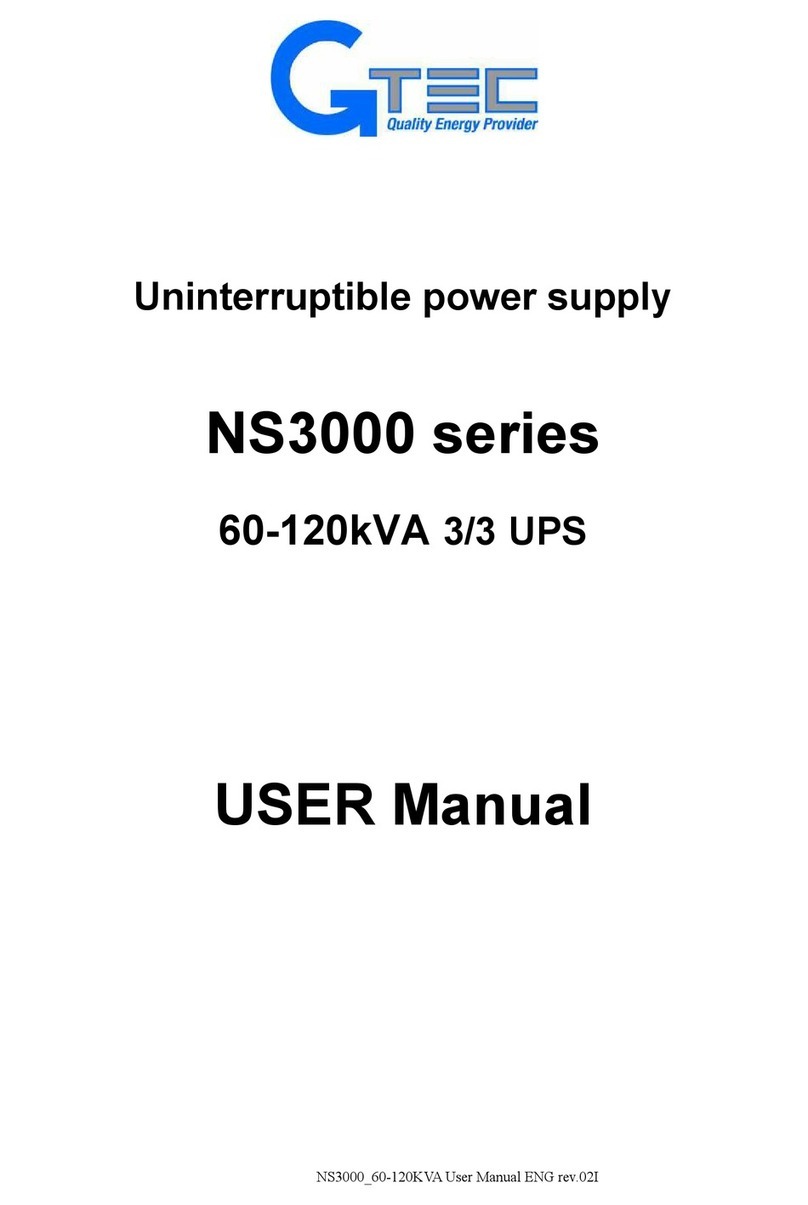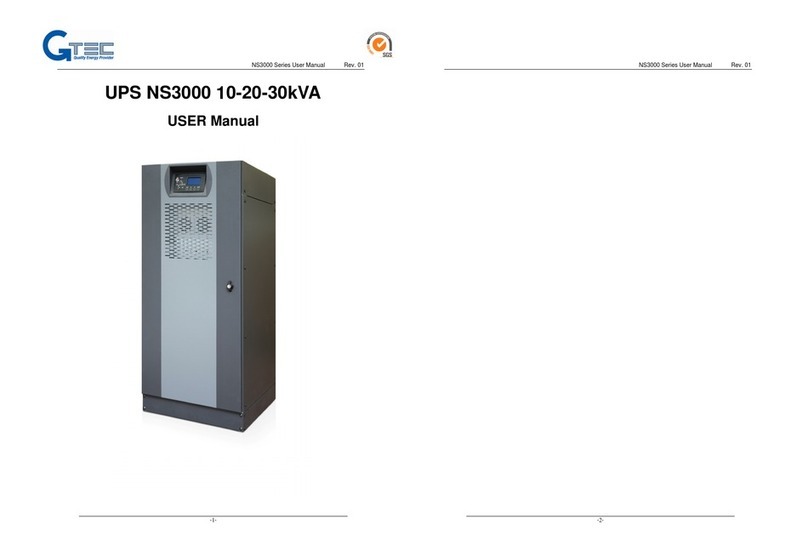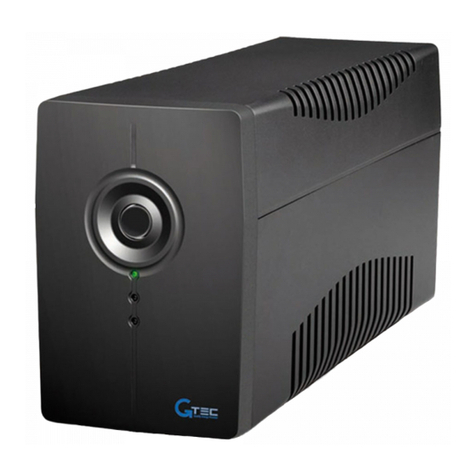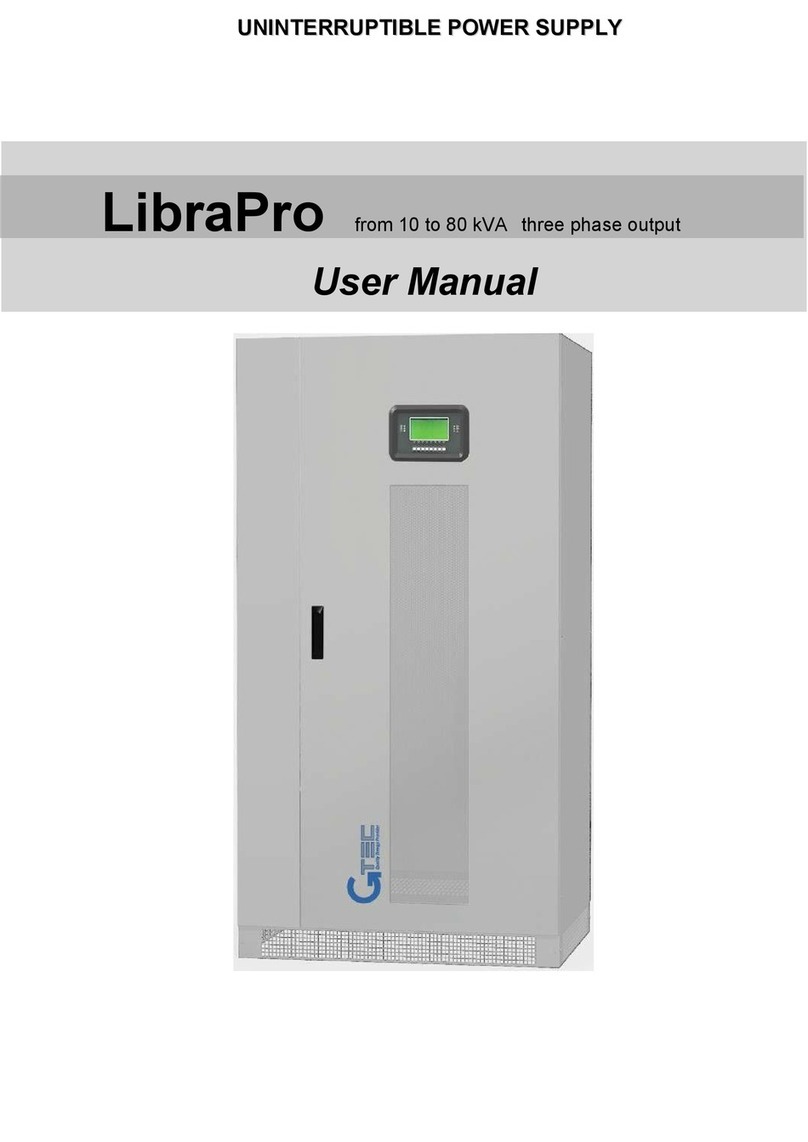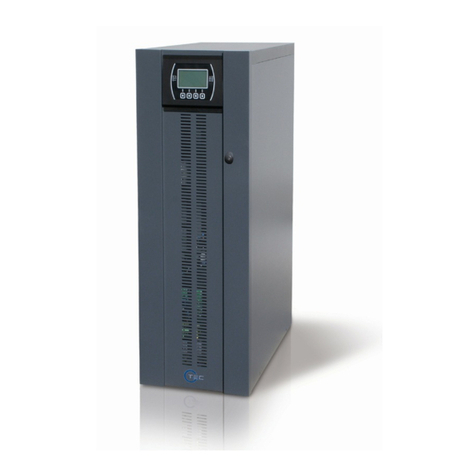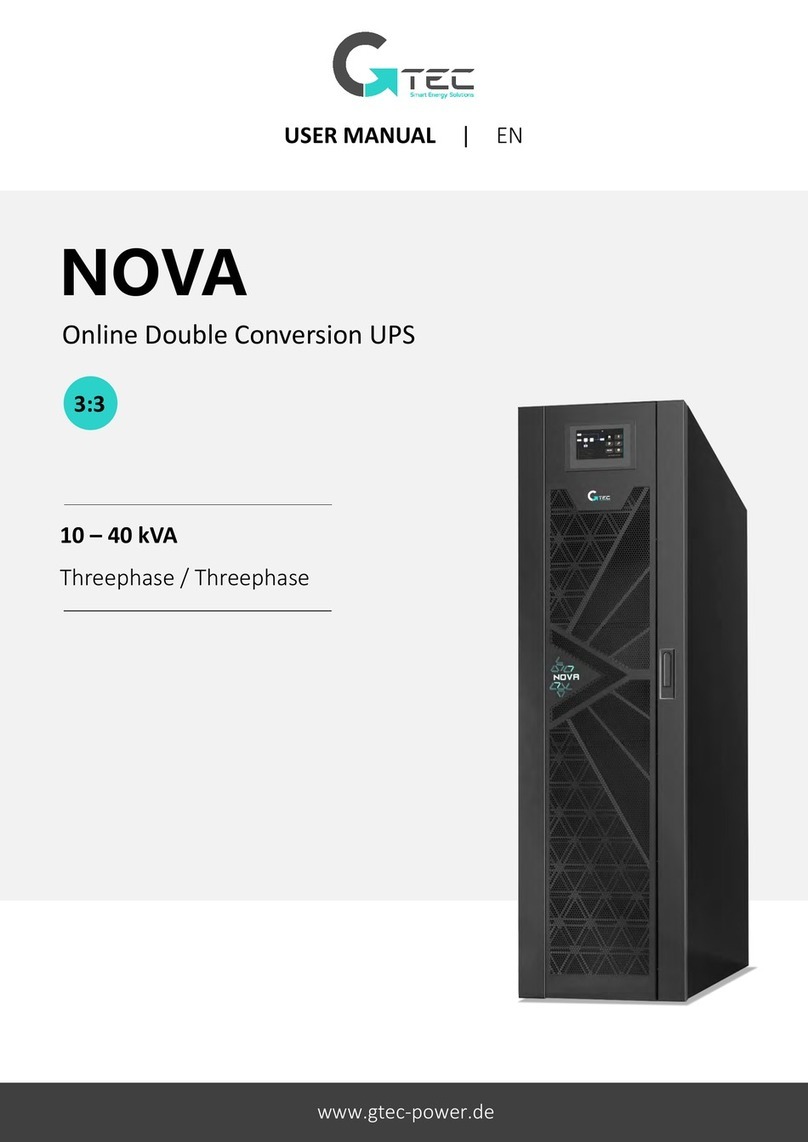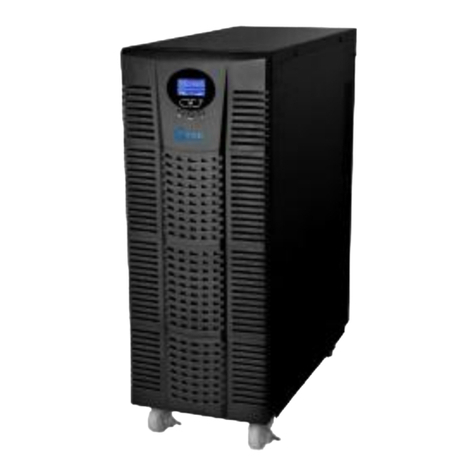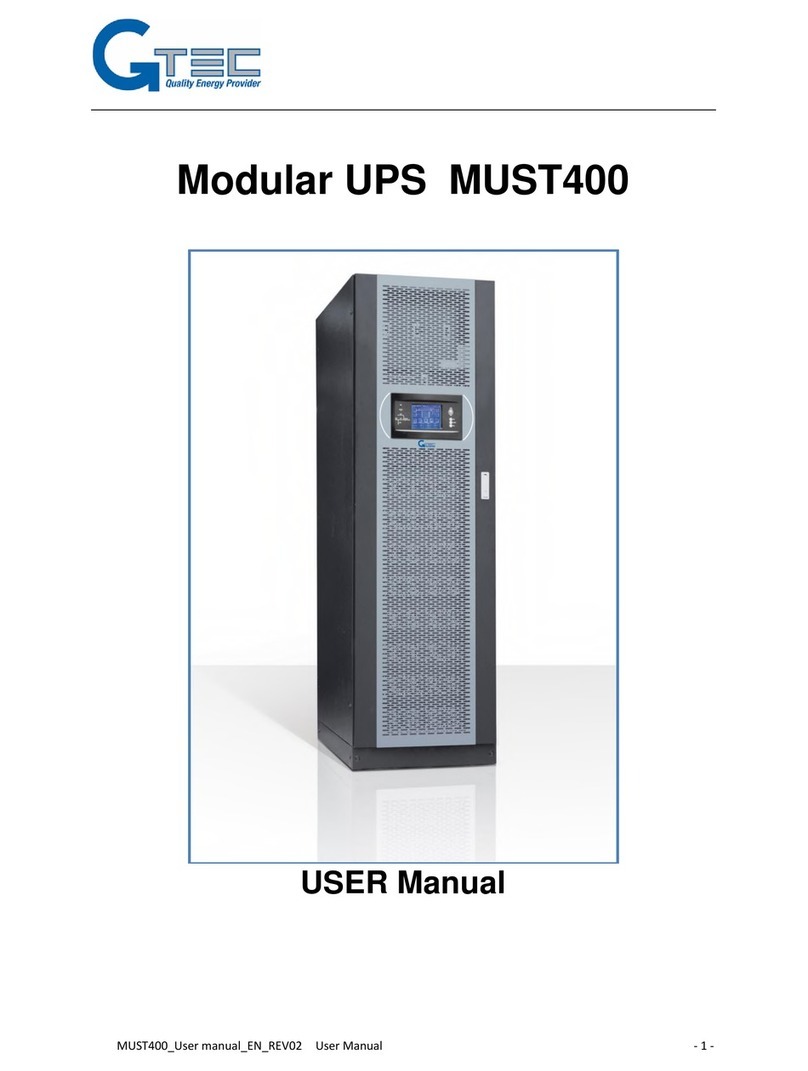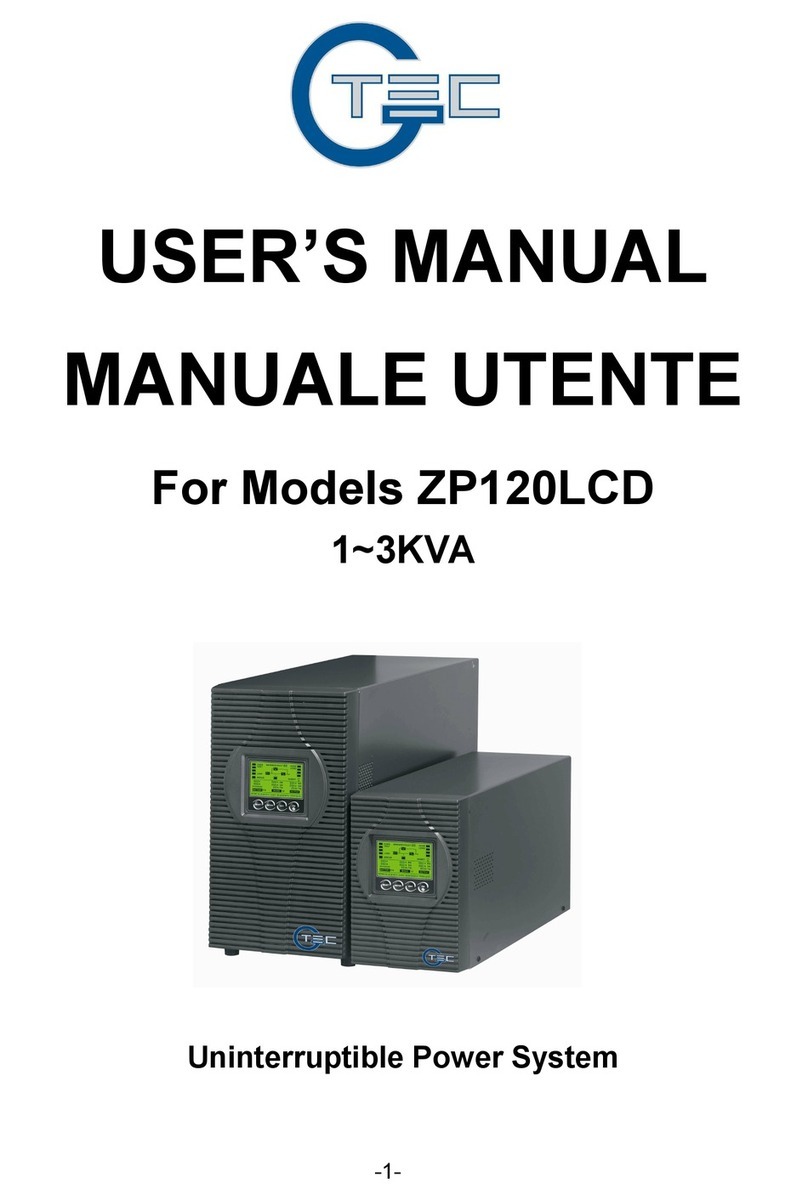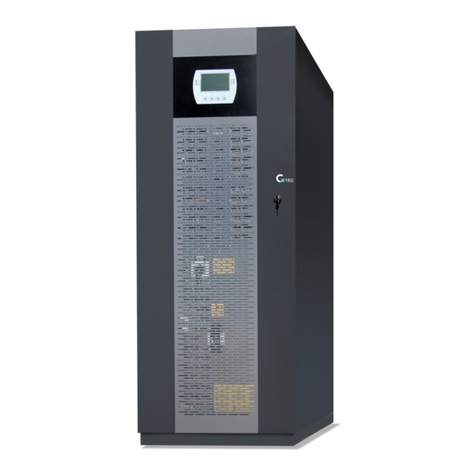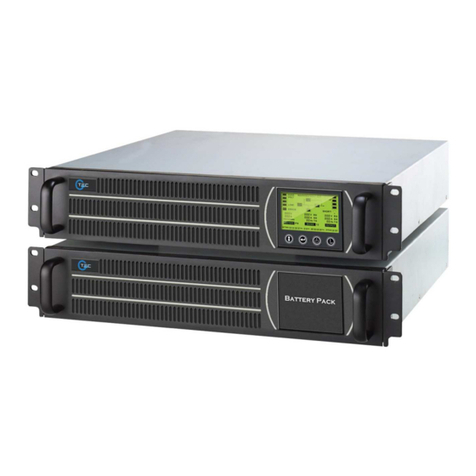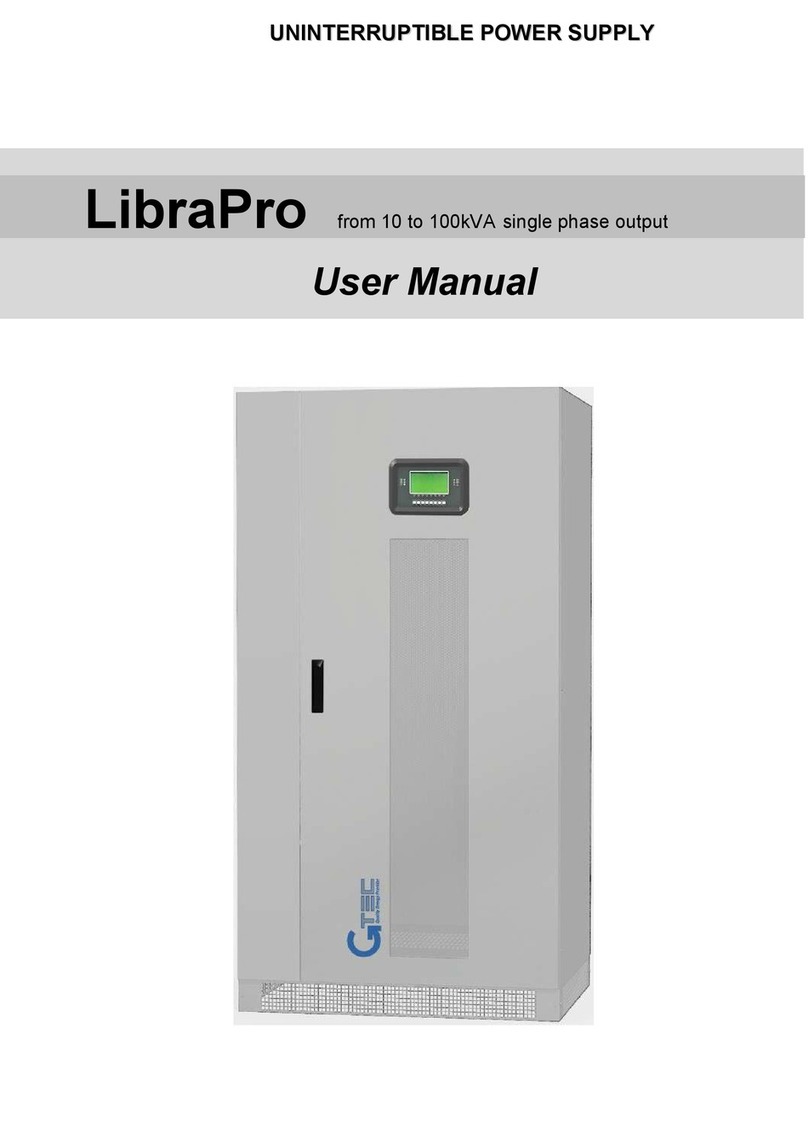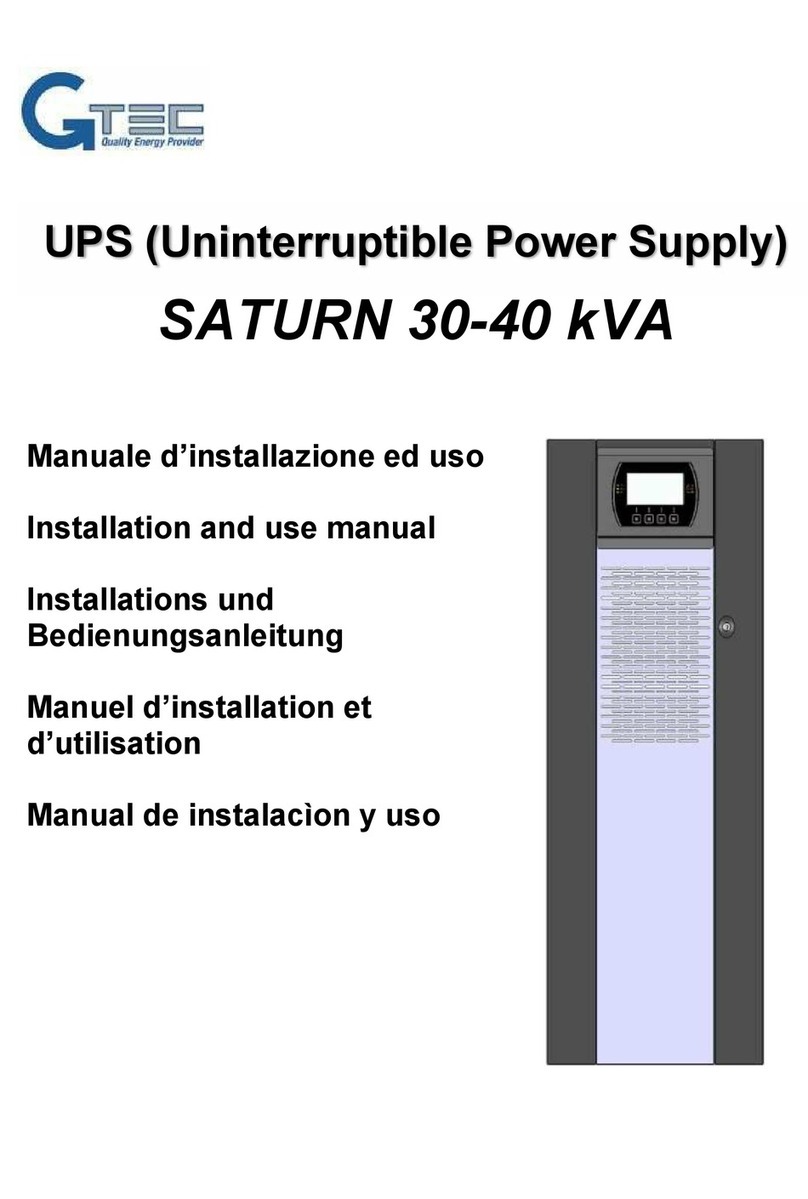16
4.2 Input andOutput Power Cords andProtective
EarthGround Installation
1. Notesforinstallation
1) The UPSmustbe installed inalocationwithgoodventilation,far
awayfromwater,inflammable gas and corrosive agents.
2) Ensuretheairvents onthefront andrearoftheUPSare not
blocked.Allowat least 0.5mof spaceon each side.
3) Condensationtowaterdropsmay occurif theUPSisunpackedina
verylowtemperatureenvironment.Inthiscaseit isnecessaryto
wait untilthe UPSisfully driedinside outbeforeproceeding
installation and use. Otherwise there arehazards of electricshock.
4) Oncetheinstallation iscompleted, thesidemountingbrackets
(usedinshipping)shallbefixedbacktoensurethestabilityofthe
UPS enclosure. Ifimpossible,additional stability can beaddedby
anchoringthemountingbrackets tothe floorwith M8bolts.See Fig.
4-5. (onlyfor tower3/1 10k-20k)
Fig.4-5 Additionalstability
2. Installation
Installationand wiringmustbeperformedinaccordance with the
localelectriccodeand the followinginstructionsbyprofessional
personnel.
17
Forsafety, pleasecut offthe mainspower switch before installation.
1) Opentheterminalblockcoverlocated ontherearpanelof the
UPS, pleasereferto theappearance diagram.
2) Fortower3/110K/10K-31CUPS, itis recommendedtoselectthe
UL1015 8AWG(10mm2)wire orotherinsulatedwirewhich
complieswithAWG Standardforthe UPSinputand output
wirings.
3) Fortower3/1 20K UPS,itis recommended to selectthe UL1015
6AWG(25mm2)wireorotherinsulatedwire whichcomplieswith
AWG Standardfor the UPS inputandoutput wirings.
Note: Do not usethewallreceptacleas the input power source
for theUPS,asits ratedcurrent islessthan theUPS’s
maximum inputcurrent. Otherwisethereceptacle may be
burnedanddestroyed.
4) Connecttheinputandoutput wirestothecorresponding input
and output terminals according to thefollowing diagram.
Note: youmustmakesurethat theinputandoutput wires and
the input and output terminals are connected tightly.
5) The protectiveearth ground wirerefersto thewire connection
between theequipmentwhichconsumeselectric equipment and
thegroundwire.Thewirediameter ofprotectiveearthground
wireshouldbeat leastasabovementionedforeach model and
green wire or greenwirewith yellow ribbon wire isused.
6) Afterhaving completedtheinstallation, makesurethe wiring is
correct.
7) Pleaseinstall the outputbreaker between theoutputterminal
andtheload,andthebreaker should withleakagecurrent
protectivefunctionif necessary.
